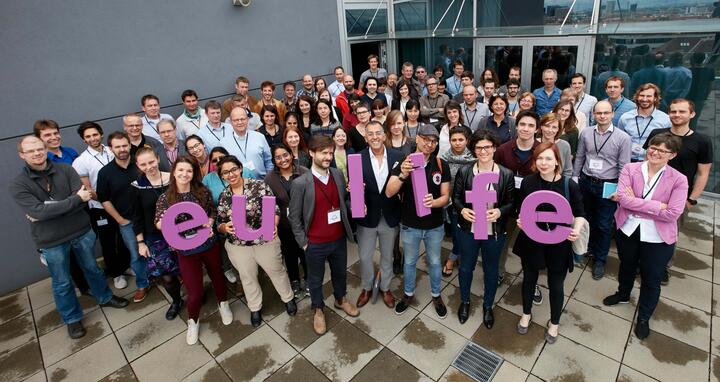Yin and Yang in the Body
Sometimes the line between what's good and bad is very thin. One of the topics at this year’s EU-LIFE Scientific Workshop was promising therapeutic strategies for cancer and the fact that the effects of them can be the opposite of those that are intended.
On May 12 and 13, researchers from the 13 European research centers that make up the EU-LIFE network gathered at the Research Center for Molecular Medicine (CeMM) in Vienna to discuss the topic of “inflammation and immunity.” EU-LIFE, an initiative founded in 2013, offers significant opportunities for the participating institutes: “EU-LIFE creates the scope for fantastic collaborations between the centers and between researchers on every level,” said Jo Bury, director of the Vlaams Instituut voor Biotechnologie (VIB), in a speech that opened the workshop.
Such collaborative opportunities were reflected in the scientific presentations, which had an special format. “Tandem talks” were delivered by one researcher from basic research and another from the clinical side, teaming up to report on how science moves between the laboratory and the hospital bed.
MDC-researcher Thomas Blankenstein and Il-Kang Na from the Charité and the ECRC presented their recent progress in cancer therapy with T cells. These cells can be isolated from a patient's blood, equipped with new T cell receptors that detect cancer cells by binding pathologically altered features on their surface and destroy them. First clinical tests employing this strategy have been very successful. Challenging tasks that lie ahead are the selection of suitable T cell receptors or special subpopulations from the family of T cells. These are topics the two researchers are working on.
A recurring theme in the talks was the duality of many of the body's regulatory mechanisms. If a therapy changes the operation of a mechanism, it can trigger unwanted effects that, in the worst case, are precisely those that the therapy is designed to prevent.
For example, the two researchers from the VIB in Belgium, Jo van Ginderachter and Max Mazzone, came across such a phenomenon in their work on cancerous tumors. While macrophages located in the immediate vicinity of the tumor can fight the cancer and drive inflammatory processes, they can also stimulate the formation of blood vessels and thus encourage tumor growth and metastasis. Mazzone showed a solution: In mice, preventing macrophages from migrating to the low-oxygen niches of cancerous tumors hinders the unwanted effect and curbs the spread of metastases.
The 13 EU-LIFE research centers cover all topics related to biomedicine, so the inflammation and immunity workshop covered a much wider area. The speakers covered more types of cancer and therapies, but also examined conditions such as Parkinson’s, chronic inflammatory bowel diseases, immune tolerance, and sepsis.
“Although our work is on a par with Harvard and Oxford, policymakers don’t hear us,” says Jo Bury. By joining forces in the EU-LIFE network, the research centers hope to increase their visibility on a political level. The examples are representative of the fascinating, world-class research happening at the EU-LIFE research centers – and show the crucial role of collaboration in excellent research.
Further information
Featured image: All participants of the workshop, image: Hans Leitner/CeMM. The text was worked out in collaboration with Cornelia Maurer.






